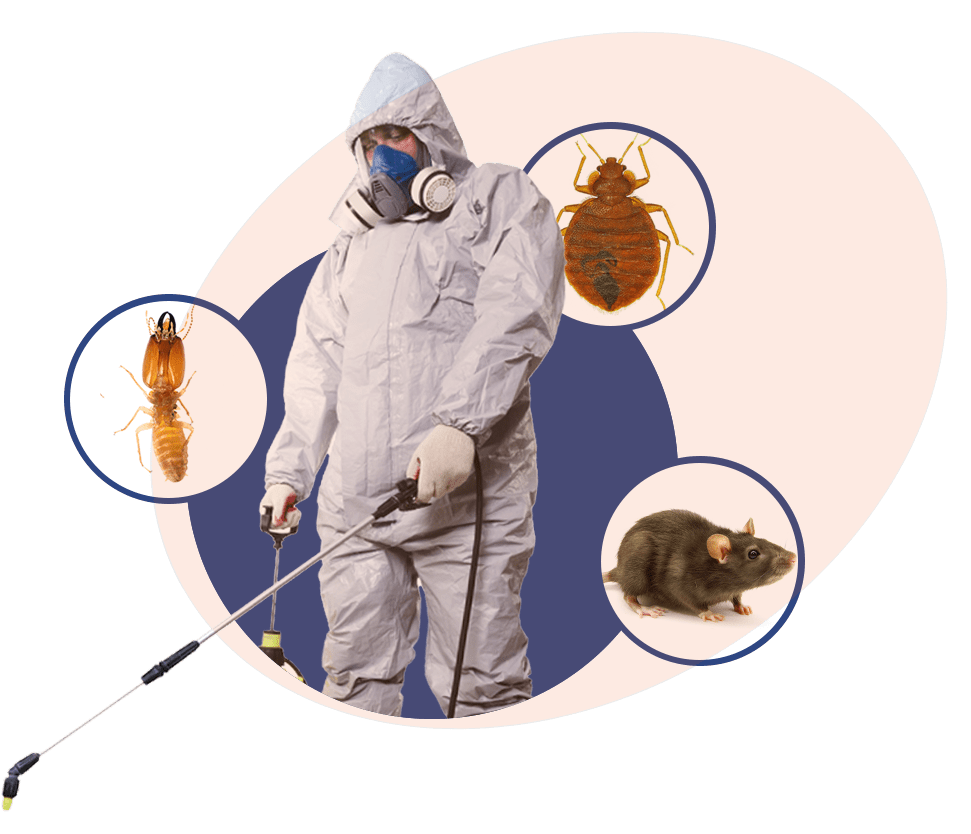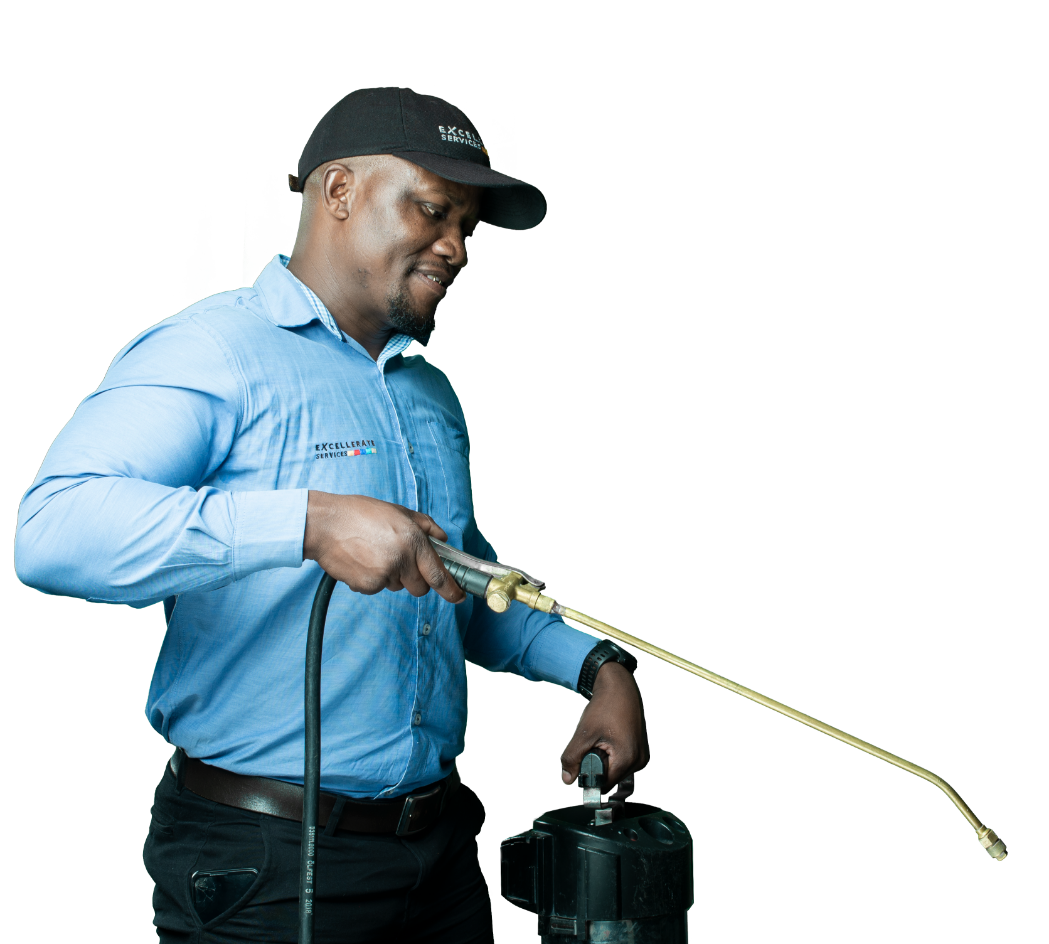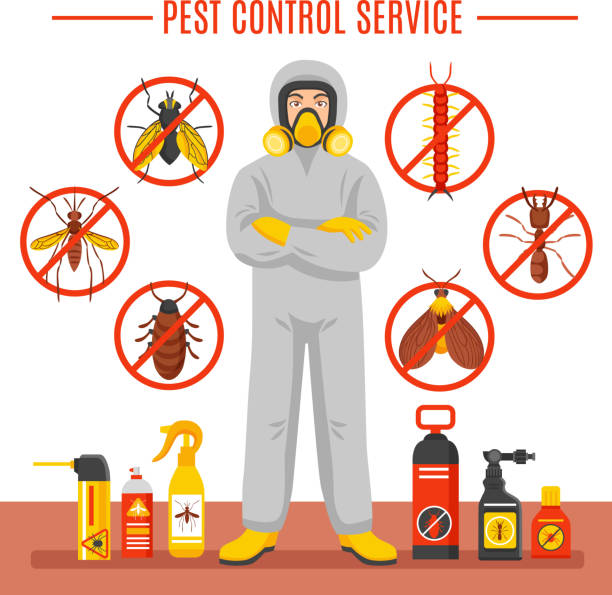Exploring Innovative Methods and Products for Effective Insect Control
The landscape of insect control is evolving, marked by the appearance of ingenious techniques and items made to enhance effectiveness and sustainability. From clever traps furnished with innovative surveillance systems to biological techniques that use natural killers, these advancements offer a standard change in how we approach pest management. Moreover, environmentally friendly chemical choices and scent interruption strategies offer targeted services that straighten with ecological stewardship. As the sector comes to grips with these growths, a closer examination reveals not only their ramifications but also the prospective obstacles that might emerge in their implementation.
Smart Traps and Keeping Track Of Systems
Exactly how can modern technology boost bug management? One significant innovation is the growth of clever traps and checking systems, which provide real-time information and analytics for efficient insect control. These systems utilize sensors and wireless modern technology to discover insect task, signaling residential property managers and parasite control experts to problems before they escalate.
Smart traps are equipped with features such as bait terminals that attract pests and catch them efficiently. These catches can be kept track of from another location, permitting for prompt interventions and lessening the demand for substantial chemical applications. The integration of machine understanding formulas makes it possible for these systems to distinguish between target pests and non-target species, boosting the precision of bug control measures.
In addition, the data accumulated from wise traps can be examined to recognize patterns in pest habits and ecological aspects adding to problems (Pest Control in Port Charlotte). This information is very useful for establishing targeted bug administration approaches customized to particular atmospheres. By accepting wise traps and monitoring systems, bug control professionals can improve their operational efficiency and lower the ecological effect of insect monitoring, inevitably causing much safer and much more sustainable techniques in the market
Biological Parasite Control Techniques
Making use of all-natural predators and bloodsuckers, biological pest control approaches offer an eco-friendly option to chemical therapies. This method includes the intro or improvement of specific microorganisms that can naturally manage insect populaces, thus decreasing reliance on artificial pesticides. Typical examples consist of using ladybugs to regulate aphid invasions and parasitical wasps to target caterpillars.

Biological control can be classified into 3 main techniques: classic, augmentative, and conservation. Timeless biological control entails importing natural enemies from the insect's indigenous environment, while augmentative control includes increasing the population of existing all-natural enemies with launches. Preservation methods concentrate on producing conditions that sustain these beneficial organisms in the ecological community.
The efficiency of organic parasite control depends upon understanding the intricate interactions within ecological communities. It frequently calls for an extensive analysis of insect characteristics and the life process of both the pests and their natural enemies. While biological approaches might not provide instant outcomes like chemical alternatives, they add to lasting pest administration and ecological community health. As understanding of ecological concerns expands, biological insect control techniques are progressively recognized for their sustainable role in incorporated parasite management programs.
Eco-Friendly Chemical Alternatives
Eco-friendly chemical alternatives provide a viable remedy for parasite monitoring that decreases environmental effect while effectively regulating pest populaces. These alternatives are stemmed from natural resources and are very carefully developed to target specific parasites without damaging helpful microorganisms, making them a crucial part of sustainable pest control strategies.
Amongst one of the most reliable environmentally friendly options are plant-based pesticides, such as neem oil and pyrethrin, which are obtained from the seeds and flowers of numerous plants. These compounds disrupt the life process of insects, decreasing their populations without the poisonous impacts linked with traditional pesticides - Pest Control in Port Charlotte. Furthermore, why not find out more vital oils like pepper mint and clove oil display repellent properties, even more boosting their energy in pest administration

In addition, eco-friendly chemical choices typically break down much more quickly in the environment, minimizing the threat of soil and water contamination. This particular aligns with the increasing consumer need for sustainable methods in agriculture and urban insect control. As research continues to advance, the development of cutting-edge environmentally friendly formulations will further improve efficacy and broaden application locations, making it possible for pest monitoring experts to adopt greener, more responsible techniques in their techniques while guarding human health and wellness and the atmosphere.
Pheromone Disturbance Methods
An additional cutting-edge technique in sustainable pest monitoring is using pheromone disturbance strategies. These approaches manipulate the all-natural chemical signals, or pheromones, that insects utilize for interaction, especially in breeding actions. By interfering with these signals, bug populations can be successfully handled without turning to unsafe chemicals.
Pheromone catches are typically employed in this method. These traps use artificial versions of insect pheromones to draw male pests, therefore lowering their capacity to situate ladies and duplicate. With time, this can cause a substantial decline in pest populations. Furthermore, the launch of repellent pheromones can create confusion among bugs, even more inhibiting their breeding procedures - Pest Control in Port view it now Charlotte.

Integrated Pest Management Approaches
Effective insect control usually requires a thorough method, and Integrated Insect Management (IPM) approaches supply a framework for achieving this objective. IPM integrates different management methods to reduce parasite populaces while decreasing reliance on chemical pesticides. This multifaceted technique starts with detailed surveillance and recognition of insects, permitting for targeted treatments based on particular bug stress.
Social techniques, such as crop rotation and hygiene, play an essential function in protecting against pest facility. Biological controls, including all-natural killers and parasitoids, are utilized to keep insect populations at convenient levels. When required, discerning chemical therapies are applied, highlighting lower poisoning to non-target types and the environment.
By employing this all natural technique, IPM not just improves bug control efficiency however also adds to long-term eco-friendly balance. Eventually, Integrated Continue Insect Management stands for a forward-thinking option that aligns farming productivity with ecological stewardship, making it vital in modern bug control strategies.

Final Thought
In verdict, the assimilation of cutting-edge strategies and items for effective parasite control represents a significant development in lasting parasite management. Smart traps and keeping an eye on systems, organic bug control approaches, environment-friendly chemical alternatives, and pheromone disturbance strategies jointly enhance the effectiveness of bug administration methods.